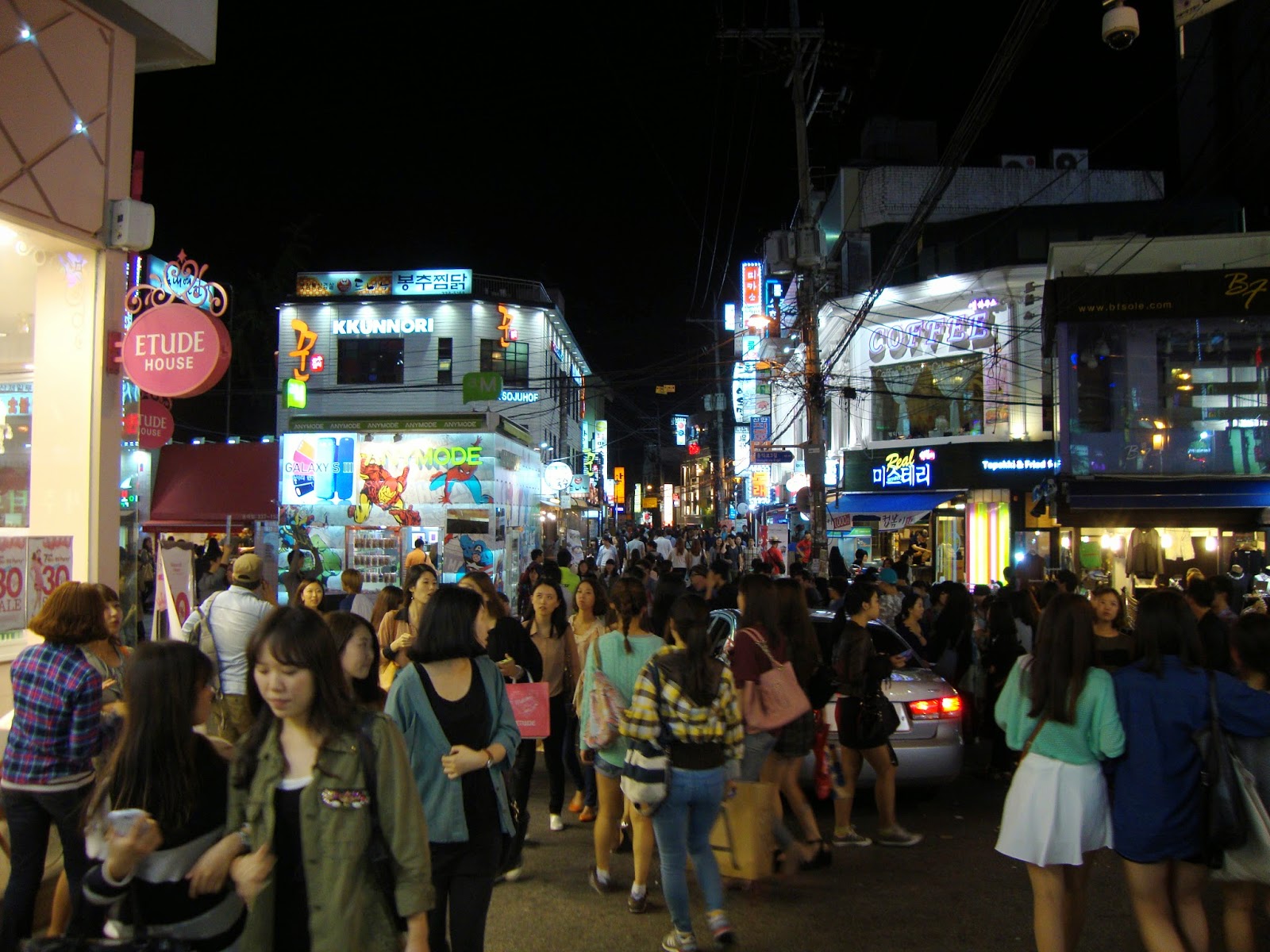Random walked passed this Korean restaurant and decided to went in for our brunch.
The entrance of the restaurant
We ordered a stir fried spicy octopus and chicken [ 쭈&닭철판볶음 ]. The food was served shortly after we had ordered our food.
The side dishes [ 반찬 ] from the restaurant
Five-grain [ 오곡밥 ] rice was served instead of white rice
Stir fried spicy octopus and chicken [ 쭈&닭철판볶음 ]
The boss of the shop was helpful and kept on coming over to our table to ensure that the food was not overcooked or burnt. He even added our rice into the sauce and told us to eat it that way so that the rice will be tastier. He add in sesame oil and seaweed to the rice and keep on saying: delicious.
Set off to Namsangol Hanok Village [ 남산골한옥마을 ] after lunch.
Namsangol Hanok Village [ 남산골한옥마을 ] which is also known as the village of traditional houses. The Korean traditional houses known as Hanok [ 한옥 ] have been restored to preserve the original atmosphere of that area.
Namsangol Hanok Village [ 남산골한옥마을 ] consists of a collection of 5 Hanok [ 한옥 ] which were recovered from different parts of the city and relocated to Namsangol Hanok Village [ 남산골한옥마을 ]. Namsangol Hanok Village [ 남산골한옥마을 ] allows you to experience the Joseon dynasty citizenry and activities, from royalty to commoners.
Main gate of Namsangol Hanok Village [ 남산골한옥마을 ]
One of the Hanok [ 한옥 ]
A place where kimchi is stored
Kitchen utensils
Pots for storing Kimchi
You can easily spend about 2 hours at Namsangol Hanok Village [ 남산골한옥마을 ] by visiting the different classes of Hanok [ 한옥 ]. There are also furniture being placed in the different rooms to let you have a better understanding of daily life during the Joseon dynasty.
After touring the Namsangol Hanok Village [ 남산골한옥마을 ], you go also take part in the traditional Korean activities or games such as archery, Korean traditional dance and music and much more. During the weekends, Korean traditional marriage ceremony are shown at the Bak Yeong Hyo's residence and the ceremony is usually held at noon or 1pm. So do stay and watch the ceremony if you are visiting Namsangol Hanok Village [ 남산골한옥마을 ] during weekend.
How to go to Namsangol Hanok Village [ 남산골한옥마을 ] :
Chungmuro Station ( 충무로 역 ), Line 3 or 4 [ 3/4호선 ] Exit 4 [ 4번 출구 ]
Other Information
Admission : Free
Closed on every Tuesday
Opening Hours :
April - Oct : 9am - 9pm
Nov - Mar : 9am - 8pm
Final photo before setting off for Gyeongbokgung [ 경복궁 ]
Let's move on to the next stop : Gyeongbokgung [ 경복궁 ]
Gyeongbokgung [ 경복궁 ] is the main and the largest of the five grand palaces built by the Joseon Dynasty. It was built in 1395 ( 3 years after the Joseon Dynasty was found ) and served as the home for the kings of the Joseon Dynasty.
The palace continued to serve as the main palace until Japanese invasions of Korea ( 1952 - 1598 ), when all of the palaces were damaged. The palace was abandoned for 2 centuries and was only restored and reconstructed under the leadership of Price Regent Heungseon [ 흥선대원군 ] during the reign of King Gojong [ 고종 광무제 ].
Gyeongbokgung [ 경복궁 ] flourished for several decades until the Japanese once again demolished the palaces during the Japanese occupation ( 1910 - 1945 ).
Heungnyemun, The second inner gate of Gyeongbokgung [ 경복궁 ]
The Korean government has been putting in effort since 1990, trying to restore and rebuild the building that were destroyed during the Japanese occupation. Although only about 40% of the buildings have been restored, but there are still lot of beautiful things to see in the palace.
Geunjeongjeon [ 근정전 ] ( Imperial Throne Hall )
Geunjeongjeon [ 근정전 ] interior
Gyeonghoeru [ 경회루 ] ( The Royal Banquet Hall )
Beside taking a tour and looking at the different buildings in the palace, the reenactment of the changing of the Royal Guard and the Patrol Ritual are performed daily from 10am to 3pm, in front of the second inner gate of Gyeongbokgung [ 경복궁 ] - Heungnyemun.
Do stay for the reenactment of the changing of the Royal Guard and the Patrol Ritual if you have a chance as the ceremony is quite grand and it last for about 10 minutes, giving you the chance to take lots of photos of the ceremony.
How to go to Gyeongbokgung [ 경복궁 ] :
Gyeongbokgung Palace Station [ 경복궁 역 ], Line 3 [ 3호선 ], Exit 5 [ 5번 출구 ]
or
Gwanghwamun Station [ 광화문 역 ], Line 5 [ 5호선 ], Exit 2 [ 2번 출구 ]
Other Information
Admission : 3000won
Closed on every Tuesday
Opening Hours :
Nov - Feb : 9am - 5pm
Mar - May and Sept - Oct : 9am - 6pm
Jun - Aug : 9am - 6.30pm
Last admission : 1hr before closing
This day allow me to understand the different classes of Joseon Dynasty, from the royalty to commoners. It also leave me in awe of how the Korean government is making an effort to preserve such historical sites so that the future generation can have a better understanding and also a chance to view the past.
It also make me wonder about the history of the other dynasty such as the Silla dynasty, the Goryeo dynasty and much more. I hope that I have the chance to find out more about the histories of the other dynasty in the future.
